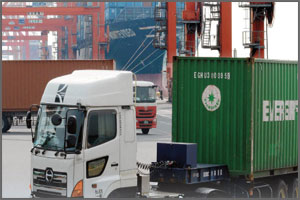 Tanzania is the best route for transit goods in the region, according to a new survey by the World Bank.
Tanzania is the best route for transit goods in the region, according to a new survey by the World Bank.
It takes more time to move goods within Kenya compared with Tanzania, a fact that favours the latter. Kenya dropped 23 places to position 122, according to the worldwide Logistics Performance Index (LPI) survey for 2012, while Tanzania rose seven places to position 95 in 2012, to become the top ranked nation in the region.
Rwanda was ranked at position 139 up from 151 while Burundi ranked last at position 155. Uganda, which was ranked position 66 in 2010, was not ranked this year.
The LPI scores countries based on six components that trace how easily and quickly goods are cleared at the port, to how easily they are transported, by road or rail, within the country or in transit.
The score also takes into account the competence of logistics service providers and the ability to track and trace consignments. Finally, it measures if the goods reach their destination on time.
Based on the scores, Tanzania’s port of Dar es Salam is the best route to ship goods in the region.
The fact that Kenya — which has been the preferred route in the region — has lost the logistics battle to Tanzania means that there is now pressure on Kenya to hasten reforms and development along its transport corridor from the port of Mombasa to the border points of Malaba in the west and Namanga with northern Tanzania.
According to George Song’e, the airfreight manager at Siginon Aviation, the major contributor to Kenya’s poor performance is the delay of goods clearance at the port, weighbridges and border posts.
“The extended dwell time at the port not only affects operations (congestion) but also has a ripple effect on the entire supply chain,” said Mr Song’e, adding that despite the presence of fibre optics in Kenya since mid-2009, the cost of doing business keeps escalating.
“Kenya still needs to improve its processes and regulations. Also, track and trace facilities have been limited to few players in the industry due to high costs associated with developing such tools and without shipment visibility, few international organisations are comfortable with contracting local players.”
He said that Kenya needs to embrace more technology initiatives like e-Freight to allow shipment processes to commence prior to arrival of cargo to reduce dwell time.
Already, the inefficiency at the port of Mombasa has seen countries in the hinterland opt to import goods through the port of Dar es Salaam. For example, it takes between 7-14 days to clear goods at the port of Mombasa, compared to a maximum of nine in Dar es Salaam. Recent data from the Kenya Ports Authority shows that Mombasa handles 20 per cent less cargo — 552,000 tonnes — destined for northern Tanzania and the inland countries of Rwanda, Uganda, Burundi and the DR Congo.
The port of Dar es Salaam has increased its market share in East Africa, handling 16 per cent more containerised cargo last year, thanks to road improvement, eating into Mombasa’s share. The Dar port handled 475,000 twenty-foot equivalent units (TEUs) in 2011 compared with 415,000 TEUs the previous year.
In East Africa, Rwanda, Uganda and Burundi incur the greatest costs due to their distance from the region’s ports of Mombasa and Dar es Salaam.
Source :theeastafrican.co.ke